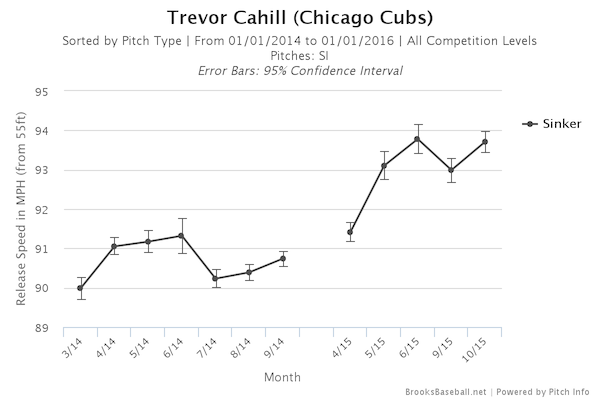For the next five minutes, convince yourself that Barry Bonds retired following the 1998 season. Perhaps he suffered a bad injury in the offseason prior to spring training in 1999. Maybe he got tired of playing baseball and wanted to become a farmer. Make up whatever fantastic story you want to about his life after 1998 — just don’t have it include playing major league baseball.
We’re focusing on 1998, of course, because that’s the final year Bonds was considered “clean” by most sources. For our purposes, I’m not going to try to pinpoint specific months or dates: 1999 was the first season Bonds had Greg Anderson as a full time personal trainer, the man who supposedly introduced him to certain PEDs, and there are books written about this subject that can inform a reader on specific timing far better than I can here. For today, the offseason after the 1998 is the delineating line.
——–
It’s the winter of 1998. K-Ci & JoJo are on the top of the charts with “All My Life.” In theaters, You’ve Got Mail reigns supreme. When the news of Barry Bonds’ retirement breaks, newspaper columns talk about how incredible his 13-year career was — often juxtaposed to the outsized personality he showed in the clubhouses of the Pirates and Giants. SportsCenter is particularly watchable, and Stuart Scott and Rich Eisen reflect on what might have been: about how, if only he were able to play for a few more years, Bonds could have been the first player in baseball history to hit 500 home runs and steal 500 bases. What an honor to have been able to watch this guy play, they say to the camera.
Following the sudden shock of his retirement, writers and analysts turn to another subject: Bonds’ Hall of Fame chances. They tally his counting statistics through the 1998 season and compare them against every player since 1871:

Barry Bonds, 1986-1998, All-Time Ranks
| Home Runs |
411 |
26th |
| RBI |
1216 |
93rd |
| Runs |
1364 |
75th |
| Stolen Bases |
445 |
45th |
| AVG/OBP |
.290/.411 |
— |
| Awards |
3 MVPs, 8 Gold Gloves |
— |
SOURCE: FanGraphs
*Ranks include all player seasons from 1871-1998.
Given the exceptional power and speed numbers, as well as his stellar defense, Bonds has the statistics to get into Cooperstown on one of his first few tries. However, there is one issue that raises a flag for voters: his character. Always making the game about himself, Bonds’ history is littered with showing up coaches, arguing about his contracts, and always needing to to be the center of attention. After a couple years of not getting in, comparisons to Dick Allen’s situation starts to surface, but finally — after Bonds has paid his character penance — he’s voted in. A few years later, analysts run the numbers on the best players in history up to their age-34 season with a new metric, Wins Above Replacement. Bonds is the 12th-best player in baseball history up to 1998 by WAR for players aged 34 and under, and he ends up 19th overall with no age cap.
Even though he retired with seemingly so much left to give on the field (he put up 8.5 WAR in his final season, 1998), Bonds is a clear Hall of Famer.
Read the rest of this entry »



